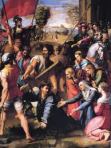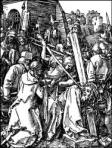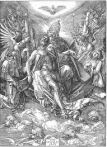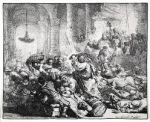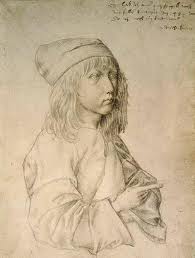I tend to be neglectful when I am in the middle of translating a new document. Whether it is an article or a blog, whether it is journalism or a diary, both are consuming in their own way and one would like to think that what we are reporting or sharing is worth the time of the reader.
This document I am translating is devoted to the nineteen engravings from the Saints and Apostles by Albrecht Durer (which I hope to finish through weekend). I do not know much about the Apostles and I know very little about being a Saint.
With that being said, I am translating the German language, from the catalogue raisonne by Joseph Meder, which I do not pretend to fully understand, for an artist like Albrecht Durer who I pretend I do fully understand.
But let us make no make mistake about it, being a far better enthusiast than a scholar, I am driven more by passion than expertise.
Under normal circumstances that might bother me, but some of the greatest documents in art history were gleaned by individuals like Walter Strauss (Founder of Alibris books), who I was told was at one time a toy manufacturer and became a luminary on Durer; or, Frits Lugt, who became a man of means by marriage and was content documenting collectors’ stamps and evolved into a leading authority on Rembrandt.
In the art world, these are names that are far more than just footnotes in art history; and, I am not saying I am on the same playing field as these individuals. In fact, I do not profess to even be in the same arena. But, I am saying I understand their passion. It is innate. Visceral. Autonomic.
It is no different than breathing (and I love breathing) or my beating heart. Without ever thinking about either, I just breathe it. This is how I feel about sharing this passion.
In short, I simply love it without ever having to think about how much I love art itself or sharing this passion.
It might be because I am not an artist. Or, in a previous life I was a pencil or a copper plate. I don’t know.
In as much, Carl Jung was right! He said, “A great work of art is like a dream; for all its apparent obviousness it does not explain itself and it is never unequivocal.”
I cannot explain myself either, but my passion is undeniable.
Thanks for listening.





